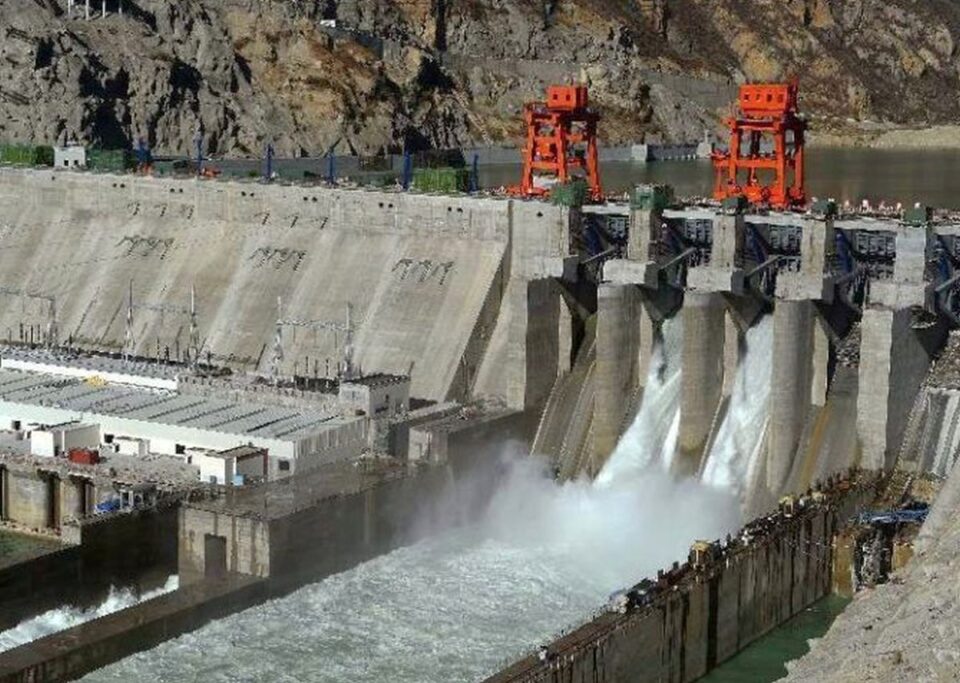China on Thursday played down its plan to build a major dam in the lower reaches of the Brahmaputra river in Tibet, saying there is no need to have “any anxiety” over the project and Beijing will continue to have “good communication” with lower riparian states — India and Bangladesh.
China’s plan to build the dam over Brahmaputra river, reportedly at Medog in Tibet, which borders Arunachal Pradesh, was disclosed by Yan Zhiyong, chairman of the Power Construction Corp of China, at a conference recently.
The over 3,800-km-long Brahmaputra, one of the longest rivers in the world passes through China, India and Bangladesh and has several tributaries and sub-tributaries.
Yan said China will “implement hydropower exploitation in the downstream of the Yarlung Zangbo River (the Tibetan name for Brahmaputra) and the project could serve to maintain water resources and domestic security”, the Global Times reported on Sunday.
Asked about China’s plans to build the dam over the river near the Line of Actual Control near Arunachal Pradesh where the Brahmaputra enters India, Chinese Foreign Ministry spokesperson Hua Chunying told a media briefing on Thursday that the “hydropower development in the lower reaches of Yarlung Zangbo river is China’s legitimate right. When it comes to use and development of cross border rivers, China always acts responsibly.”
“We have a policy featuring development and conservation and all projects will go through science-based planning and assessment giving full consideration to impact downstream and accommodating the interests of upstream and downstream regions,” Hua said.
“The development of lower reaches of Yarlung Zangbo is in the early stages of planning and assessment. There is no need to read too much into that,” she said.
As a lower riparian state with considerable established user rights to the waters of the trans-border rivers, the Indian government has consistently conveyed its views and concerns to the Chinese authorities and has urged them to ensure that the interests of downstream states are not harmed by any activities in upstream areas.
“For a long time, China, India and Bangladesh have had good cooperation in sharing hydrological information, flood and disaster reduction and contingency management. We will continue communication through existing channels,” the Chinese foreign ministry spokesperson said.
Asked whether China will discuss the future course of action with India and Bangladesh, she said, “actually, for a long time the three countries – China, India and Bangladesh – have been in close communication on sharing hydrological information, flood prevention and disaster reduction and contingency management.”
“Going forward China, India, Bangladesh and other concerned countries will continue to have good communication. There is no need for any anxiety on this matter,” she said.
India and China established Expert Level Mechanism (ELM) in 2006 to discuss various issues related to trans-border rivers.
Under existing bilateral Memorandums of Understanding, China provides hydrological information of Brahmaputra River and Sutlej River to India during the flood seasons.
Under the arrangement, China provides flood season data of the Brahmaputra river between May 15 and October 15 every year.
The report raised concerns in India as China has already operationalised the USD 1.5 billion Zam Hydropower Station, the largest in Tibet in 2015.
The dams in Tibet are a cause of concern for India as besides controlling the flow of the water, they could release large volumes of water in times of war.
Yan said the project was clearly put forward in the proposals for formulating the country’s 14th Five-Year Plan (2021-25) and its long-term goals through 2035 made by the ruling Communist Party of China.
The 14th Five-Year Plan (2021-2025) was adopted by Plenum – a key policy body of the CPC in October this year. Details of the plan were expected to be released after the formal ratification by National People’s Congress early next year.
“There is no parallel in history. It will be a historic opportunity for the Chinese hydropower industry,” Yan told the conference organised to celebrate the 40th anniversary of the founding of the China Society for Hydropower.
He said that the hydropower exploitation of the Yarlung Zangbo River downstream is more than a hydropower project. It is also meaningful for the environment, national security, living standards, energy and international cooperation.
According to the Global Times report, the mainstream of the Yarlung Zangbo River has the richest water resources in Tibet Autonomous Region, about 80 million kilowatt hours (kWh), while the 50-kilometer section of the Yarlung Zangbo Grand Canyon has 70 million kWh that could be developed with a 2,000-meter drop, which equals more than three Gorges power stations in Hubei province.
Tibet has about 200 million kWh of water resources, accounting for 30 per cent of the total in China.




